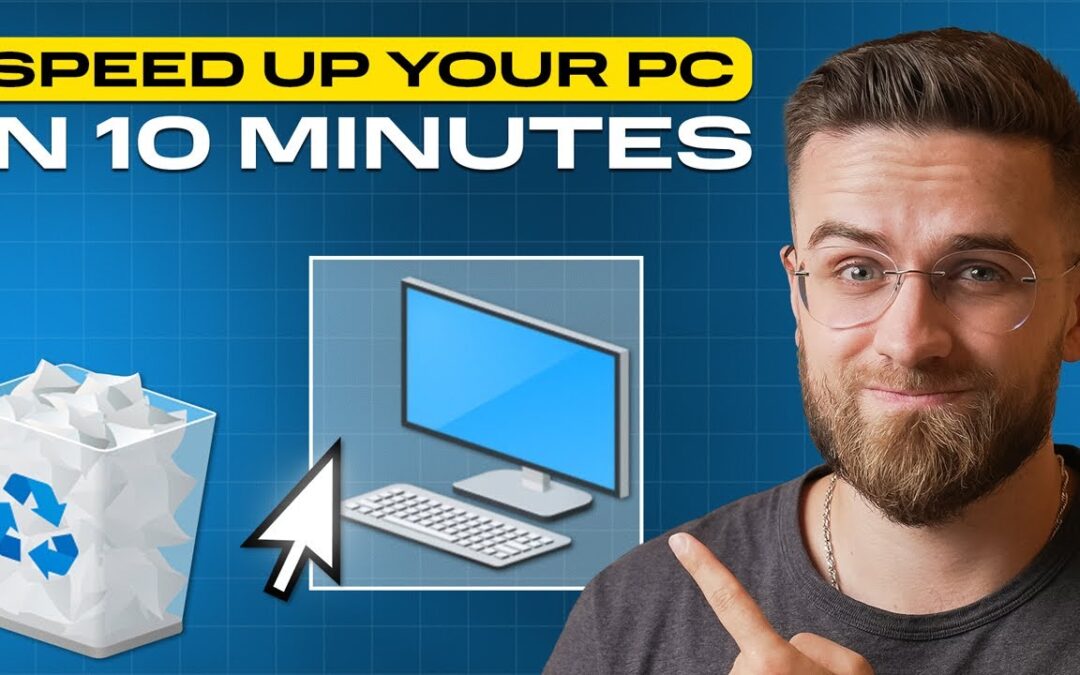Is your computer running slower than usual? Over time, even the fastest PCs can become sluggish due to cluttered files, unused programs, or outdated settings. The good news is that you don’t always need a technician—there are several simple things you can do at home to speed up your computer safely.
This guide is provided for educational purposes only and is not affiliated with any brand or software provider.
1. Restart Your Computer
It may sound basic, but restarting your PC clears background processes and frees up memory. If you keep your computer on for days, restarting can offer an instant performance boost.
2. Uninstall Unused Programs
Go through your list of installed programs and remove apps you no longer need. Old games, toolbars, or unused software can take up space and slow down system performance.
-
On Windows: Go to Control Panel > Programs > Uninstall a program
3. Disable Startup Programs
Many apps automatically start when your computer boots, which slows down startup time.
-
Press Ctrl + Shift + Esc to open Task Manager
-
Go to the Startup tab and disable unnecessary apps
4. Clean Up Temporary Files
Temporary files can build up and take space over time. Use the built-in Disk Cleanup tool or third-party software like CCleaner (from trusted sources only) to remove junk files safely.
5. Upgrade Your RAM
If your PC has less than 8GB of RAM and you multitask often, consider adding more memory. This is especially helpful for tasks like video editing or gaming.
6. Switch to an SSD
Upgrading from a traditional hard drive (HDD) to a solid-state drive (SSD) is one of the most effective ways to speed up an older computer.
7. Run a Virus and Malware Scan
Malware or unnecessary background processes can slow down your system. Use a trusted antivirus or built-in tools like Microsoft Defender to scan for threats.
Tip: Always download antivirus software from the official website to avoid unsafe versions.
8. Reduce Visual Effects
Fancy animations and shadows can slow down performance, especially on older PCs.
-
On Windows:
Go to System > Advanced System Settings > Performance Settings, then select Adjust for best performance
9. Keep Your System Updated
Make sure your operating system, drivers, and software are up to date. Updates often include bug fixes and performance improvements.
-
On Windows: Settings > Windows Update
-
On macOS: System Settings > Software Update
10. Defragment Your Hard Drive (HDD Only)
If you’re using a traditional hard drive (not SSD), defragmenting can help improve file access speed.
-
Search for Defragment and Optimize Drives in the Start menu
Note: SSDs do not need defragmentation and doing so may reduce their lifespan.
Final Thoughts
By following these 10 simple steps, you can make your computer feel faster and more responsive—without spending a fortune. Regular maintenance, safe browsing habits, and timely updates can keep your PC running like new.
Disclaimer: This article is for informational purposes only. We are not affiliated with any software or hardware provider mentioned in this post.
Would you like SEO meta tags, an image suggestion, or a version formatted for a blog platform like WordPress or Blogger?
